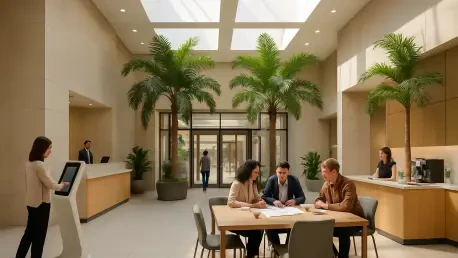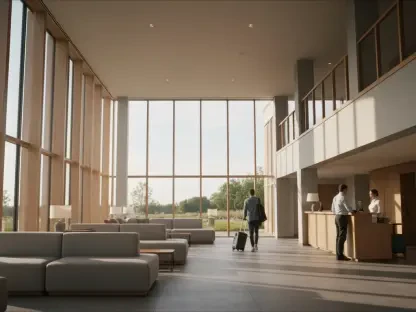In a region where business trips spill into weekend stays and project timelines stretch beyond a single quarter, extended-stay hospitality has shifted from niche to necessary as gateway cities race to add flexible lodging that feels like home yet performs like a hotel. This shift is now reshaping how brands deploy capital, choose partners, and design guest experiences, and it has opened a clear runway for disciplined operators to scale across Southeast Asia’s most active urban nodes.
Pan Pacific Hotels Group’s plan to launch PARKROYAL Serviced Suites in Manila Bay in the first half of 2027 sits squarely in this movement. The 169-key property, housed within a two-tower mixed-use development that combines offices and retail, is being positioned to serve a blend of corporate relocations, assignment teams, and long-leisure travelers who value space, service, and convenience. The project reflects a “Version 2.0” roadmap: a professional, technology-forward long-stay product tailored to the realities of today’s mobility.
Industry Context And Scope
Extended-stay lodging has taken on a distinct role in Asia Pacific’s hospitality stack by bridging residential comfort and hotel reliability. Serviced apartments and long-stay hotels offer kitchens, living zones, and laundry access alongside brand standards, staffed front desks, and safety protocols. In practice, the category captures stay lengths that outgrow traditional hotel formats but still depend on service consistency and operational uptime.
Southeast Asia’s leading cities have become the proving ground. Manila, acting as a financial and corporate hub, is experiencing continued rise in enterprise activity and conventions, supported by transport improvements and a growing services economy. Across the region, demand is clustered around relocations, project-based deployments, multi-generational trips, and long-leisure stays. Technology has accelerated adoption: contact-light service, guest apps, smart in-room systems, and connected operations reduce friction while protecting data and driving margins.
Demand Drivers And Market Dynamics
Behavior has shifted as business and leisure continue to blur and assignments stretch longer. Guests seek residential-style layouts that enable daily routines, but they expect hotel-grade service, brand consistency, and a sense of community. Mixed-use nodes have become magnets: when offices, dining, retail, and recreation sit within one footprint, long-stay guests cut commute time and maximize productivity.
Macro indicators reinforce the momentum. The Asian Development Bank projects GDP growth of 6.0% in 2025 and 6.1% in 2026, supporting corporate travel and consumer confidence. International arrivals reached 14.7 million in 2024, led by South Korea, the United States, China, Japan, Australia, and Singapore. Average length of stay has extended past 11 nights, compared with roughly 9 nights before the pandemic, while hotel occupancy reached 83.2% in Q4 2024 from 78.4% in Q3, according to JLL. The region’s multi-year trajectory favors scaled, professionally managed long-stay assets, and Manila’s strengthening hub role points to durable demand.
Strategy And Product Positioning
The Manila Bay property’s integration within a two-tower complex is central to its value proposition. Guests gain immediate access to offices and retail, reducing daily friction and supporting routine-heavy stays. A mix of studios, one-bedroom, and two-bedroom suites aligns with corporate bookers, project teams, families, and long-leisure cohorts, allowing revenue management to balance weekday base business with weekend demand.
Brand execution will hinge on four pillars: thoughtfully designed living spaces that function like homes, intuitive technology that enables contact-light convenience, community-building amenities that foster belonging, and sustainability standards that meet corporate procurement criteria. The move follows recent long-stay openings in the region, including Hanoi, building network effects for enterprise accounts seeking consistent experiences across markets.
Competitive Landscape And Execution Risks
The competitive field includes international hotel groups expanding into serviced residences, regional specialists, and capable local operators. Established brands bring loyalty ecosystems, corporate distribution, and procurement credibility. New entrants must differentiate on design, service model, and technology integration while keeping operating costs in check.
Execution has its own complexities. Delivering home-like space without sacrificing hotel-grade service requires meticulous planning around unit layouts, storage, acoustics, and maintenance access. Interoperability across property management, guest apps, and in-room systems is vital for a seamless experience and for data privacy compliance. Workforce models must adapt to contact-light service while nurturing community engagement. Phased openings, corporate partnerships, adaptive operating playbooks, and data-driven pricing can mitigate ramp-up risk and stabilize occupancy.
Regulatory And Compliance Considerations
Metro Manila’s mixed-use projects demand careful navigation of zoning, building codes, and permitting tied to integrated developments. Serviced residences operate under hospitality licensing frameworks that may govern stay length, taxation, and safety mandates. Compliance spans consumer protection, data privacy, and digital payments, which shape both guest experience and back-of-house processes.
Sustainability expectations are rising across corporate travel programs. Energy-efficient systems, waste management, and green building incentives not only reduce operating costs, they also improve conversion with enterprise buyers. Health, safety, and security protocols remain foundational, particularly for longer stays that rely on predictable standards and robust incident response.
Outlook And Forecast
Technology will compound advantages for operators that invest early. Smart rooms, unified guest apps, predictive maintenance, and AI-driven personalization can lift satisfaction while lowering service cost. Potential disruptors remain in view: changes in corporate travel policies, currency swings, or competition from flexible living platforms could affect pace, but diversified source markets and mixed-use siting help cushion volatility.
For Manila Bay, the opportunity centers on executives, project teams, and long-leisure guests attracted to live-work-play settings. Cross-selling across Pan Pacific Hotels Group’s regional network, loyalty synergies, and asset-light management deals can accelerate scale and improve margins. With opening targeted in 2027, the asset is positioned to ride sustained demand in a tightening premium long-stay segment.
Conclusion
This report concluded that extended-stay hospitality in Manila had entered a scale phase fueled by expanding assignments, longer visits, and robust macro and travel metrics. The PARKROYAL Serviced Suites project matched that demand with a mixed-use location, a versatile unit mix, and a service model built on design, technology, community, and sustainability. The analysis recommended prioritizing enterprise partnerships, fine-tuning contact-light operations, and deploying interoperable tech to secure efficiency and loyalty. It also pointed to phased activation, compliance rigor, and dynamic pricing as practical safeguards. With those steps, the 2027 launch would have positioned the property to capture resilient multi-segment demand and reinforced the brand’s regional long-stay strategy.









